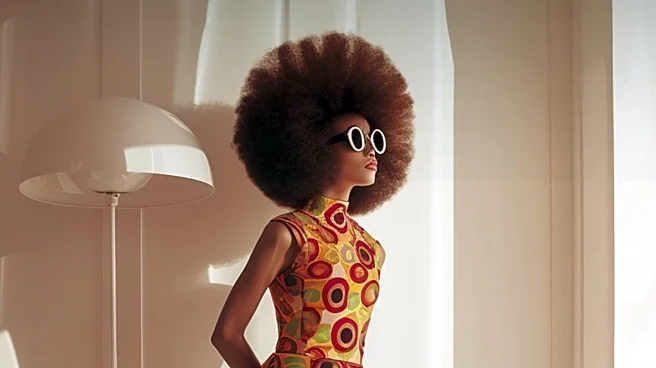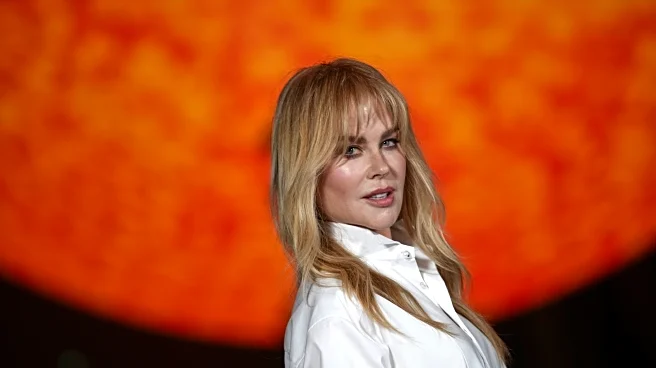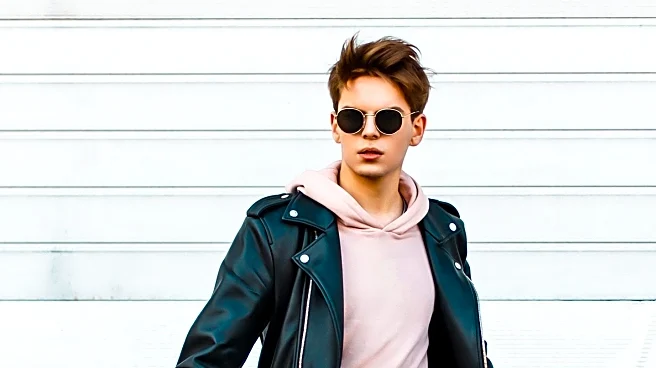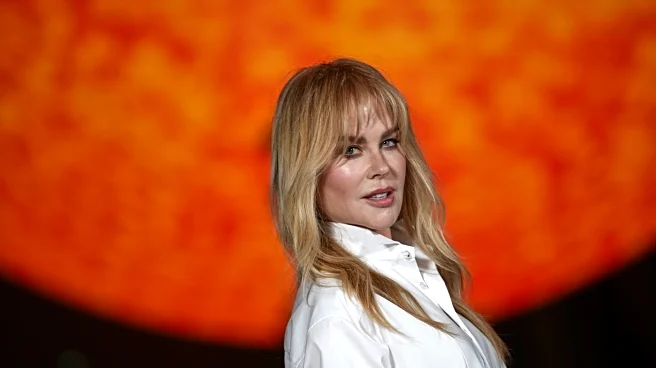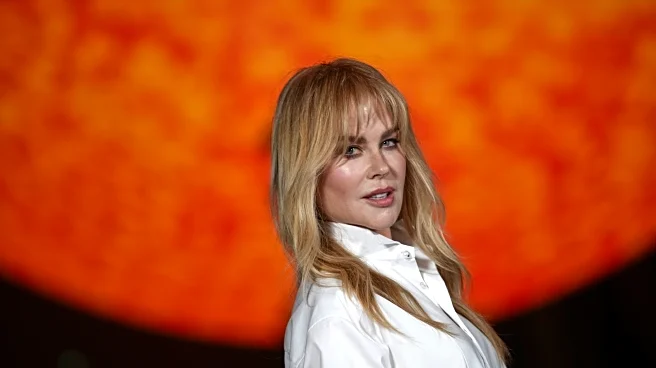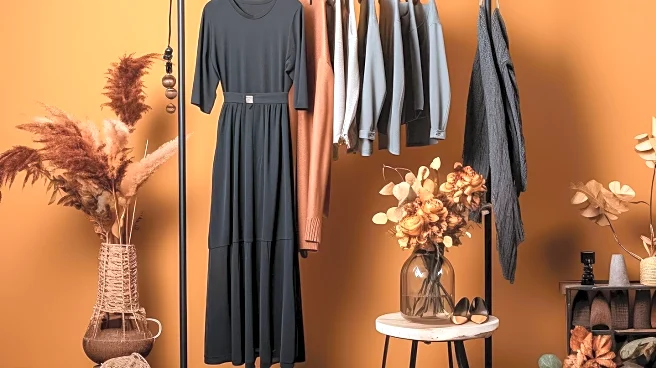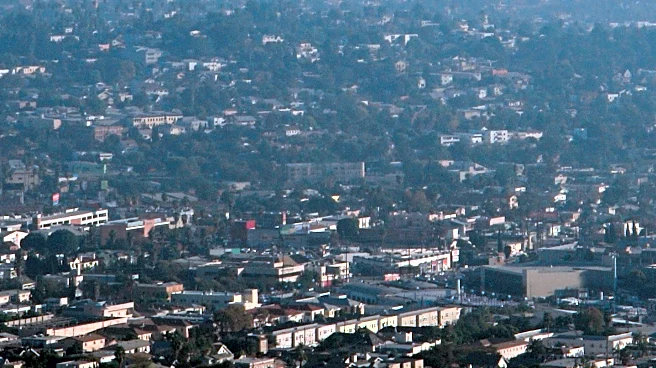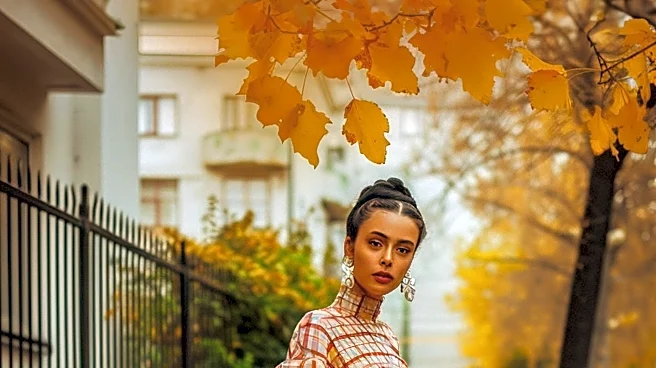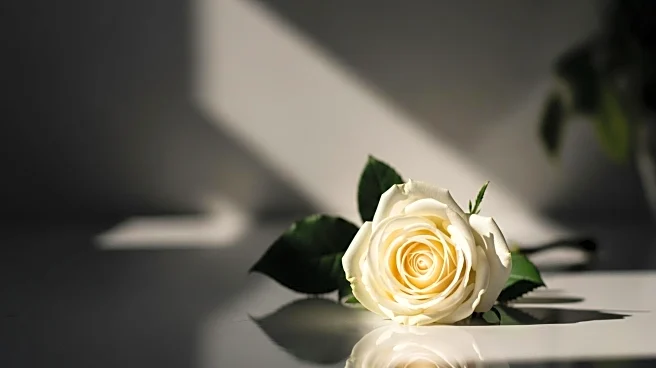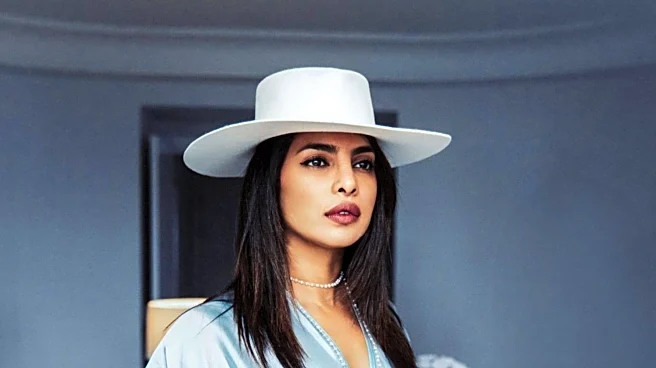What's Happening?
The article from Allure delves into the resurgence of 1980s hairstyles, highlighting how contemporary celebrities like Miley Cyrus, Keke Palmer, and Nicole Kidman are bringing back iconic styles such as mall bangs. The piece reflects on the bold and voluminous hair trends of the 1980s, characterized by natural textures and a 'bigger is better' attitude. Dusty Schlabach, a Los Angeles hairstylist, notes that the era's hairstyles emphasized individuality and confidence, allowing hair to take up space. The article provides insights into how modern styling tools and products can help recreate these classic looks without permanent changes, making it accessible for those with naturally straight hair.
Why It's Important?
The revival of 1980s hairstyles signifies a broader trend in fashion and beauty where past styles are reimagined for contemporary audiences. This resurgence reflects a cultural nostalgia and a desire for individuality in personal expression. The trend impacts the beauty industry by driving demand for specific styling tools and products that cater to these retro looks. It also influences fashion and media, as celebrities adopting these styles can lead to increased visibility and popularity among the public. The trend underscores the cyclical nature of fashion, where past styles are continually revisited and adapted.
What's Next?
As the trend gains momentum, it is likely that more celebrities and influencers will adopt 1980s hairstyles, further popularizing the look. This could lead to increased collaborations between hairstylists and beauty brands to develop products specifically designed for achieving these styles. Additionally, fashion designers might incorporate elements of 1980s aesthetics into their collections, creating a broader cultural movement that celebrates the era. The beauty industry may see a rise in tutorials and content focused on achieving these looks, catering to a growing audience interested in retro fashion.
Beyond the Headlines
The revival of 1980s hairstyles also raises questions about the cultural significance of nostalgia in fashion. It highlights how societal trends often reflect a longing for perceived simpler times, especially in periods of uncertainty. This trend may also influence discussions on beauty standards, as it challenges the notion of perfection by embracing natural textures and individuality. The movement could inspire a broader acceptance of diverse hair types and styles, promoting inclusivity within the beauty industry.

